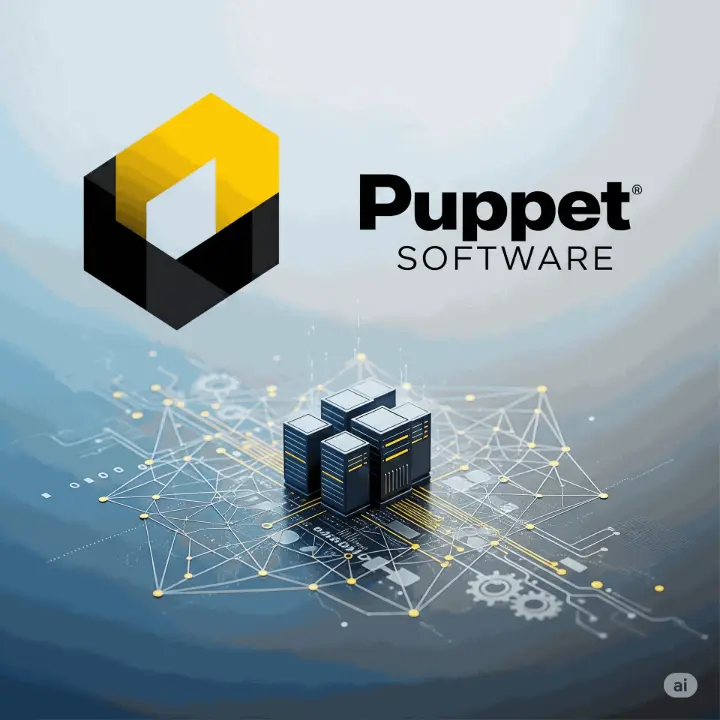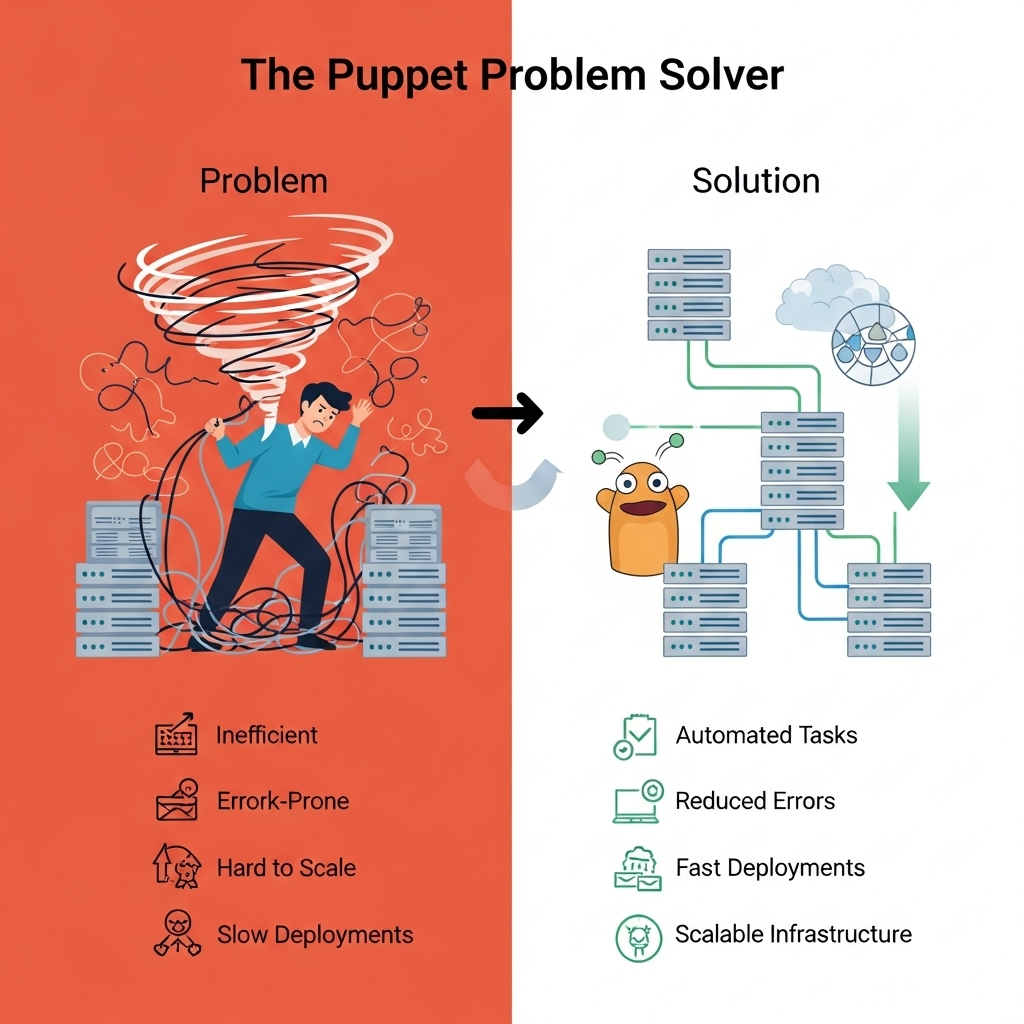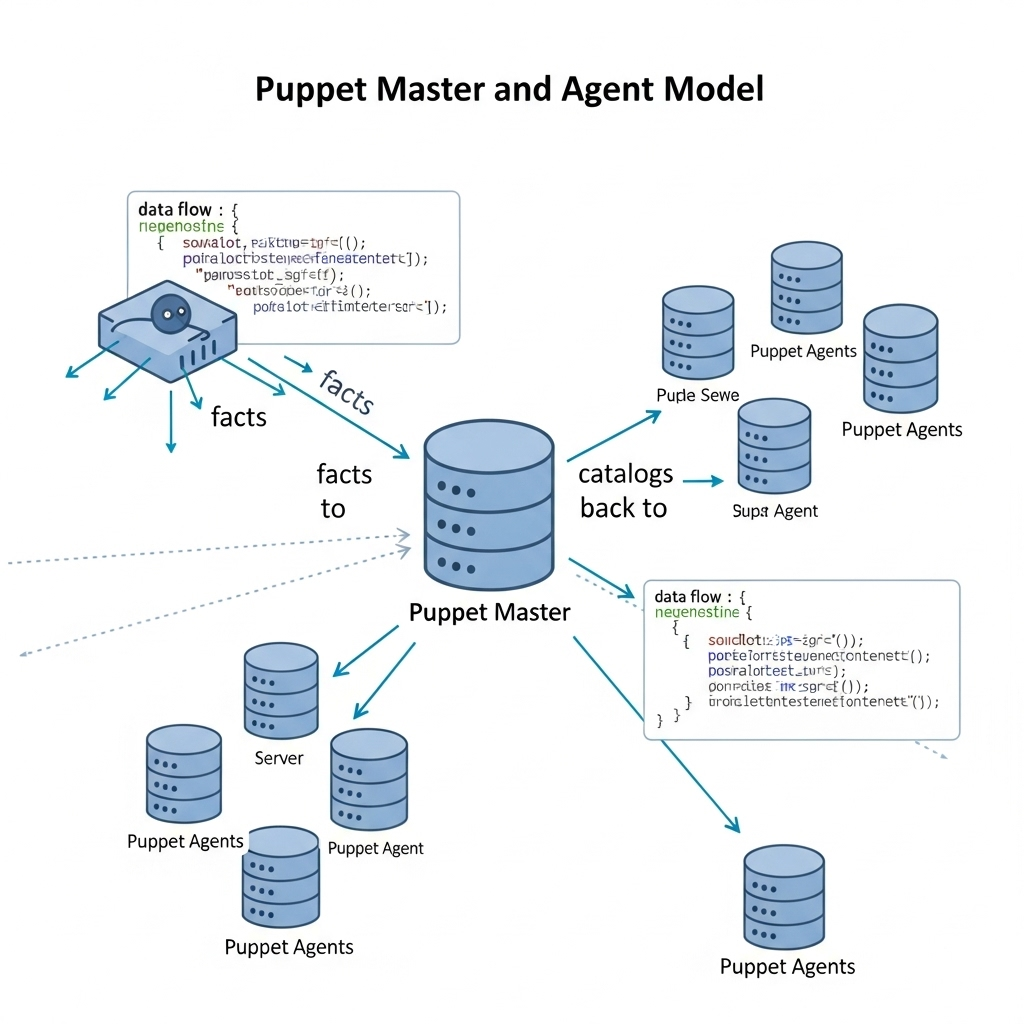In the world of modern IT, managing servers, infrastructure, and applications manually is becoming increasingly difficult especially as organizations scale. That is where automation tools like Puppet come in. If you have heard the term but aren’t quite sure what Puppet is or how it works, this guide will walk you through the basics in a clear and simple way.

What Is Puppet?
Puppet is an open-source configuration management tool designed to help system administrators and DevOps teams automate the provisioning, configuration, and management of infrastructure.
Put simply, Puppet lets you define how your servers should be set up, and then it makes sure they stay that way automatically.
Whether you’re managing 10 servers or 10,000, Puppet ensures consistency, stability, and control across your systems without needing to configure each one by hand.
What Problem Does Puppet Solve?
Traditionally, IT teams had to log into each server and configure it manually. This might work for a handful of machines, but in large environments, it's inefficient, error-prone, and nearly impossible to scale.
Puppet solves this by:
- Automating repetitive tasks
- Enforcing desired configurations
- Reducing human error
- Speeding up deployment times
The result? Your infrastructure becomes more reliable, easier to manage, and less prone to costly downtime.

How Does Puppet Work?
At the core of Puppet is a declarative language that lets you describe the desired state of your systems. Instead of writing scripts that tell the system what to do step-by-step, you define what the system should look like, and Puppet figures out how to get there.
Here is a simple breakdown of how Puppet operates:
1. Puppet Manifests
These are configuration files (written in Puppet’s own language) that define how resources like users, packages, and services should be managed. For example, a manifest might say, “Apache must be installed, running, and enabled on boot.”
2. Puppet Master and Agent Model
Puppet typically follows a client-server architecture:
- The Puppet Master holds all the configuration rules.
- The Puppet Agents run on each node (server or machine) and communicate with the master.
The agent sends facts (system information) to the master, the master compiles a catalog (a list of resources and their desired states), and the agent applies that catalog to its system.
3. Idempotency
This is a big benefit. Puppet will only make changes if something is not in the desired state. If everything is already correct, it won’t do anything ensuring safe and repeatable deployments.
Key Features of Puppet
- Platform-agnostic: Works on Linux, Windows, macOS, and more.
- Scalable: Designed for small setups and large enterprises alike.
- Declarative Language: Focuses on "what" you want, not "how" to do it.
- Role-Based Access Control: Manage who can change configurations securely.
- Reporting & Auditing: View detailed logs of what changes were made, and where.

Real-World Use Cases
Here’s how companies typically use Puppet:
- Provisioning new servers with a pre-defined setup
- Maintaining security compliance (e.g., ensuring firewall rules are always in place)
- Deploying applications across many servers with the same configuration
- Rolling out updates or changes consistently across environments
- Monitoring and fixing drift (when actual state differs from desired state)
Who Uses Puppet?
Puppet is widely used in industries such as:
- Finance
- Healthcare
- Telecom
- Retail
- Government and public sector
Major companies like Google, Salesforce, and Spotify have adopted Puppet to manage large-scale IT environments more efficiently.
Getting Started with Puppet
If you're interested in trying out Puppet, you can start with the open-source version, which is completely free. Puppet also offers Puppet Enterprise, which includes advanced features like graphical user interfaces, role-based access, and analytics.
Learning Puppet may require some understanding of system administration and scripting, but it’s very approachable especially with structured Puppet training and online resources available through Puppet’s official website and community.
Final Thoughts
As businesses continue to scale and embrace automation, tools like Puppet are becoming essential. By simplifying infrastructure management and ensuring systems are always in the right state, Puppet saves time, reduces errors, and improves reliability across IT operations.
If you're part of a team looking to modernize how infrastructure is managed or if you're an IT professional aiming to upgrade your skills learning how Puppet works is a smart move. With the right mindset and a bit of Puppet training, you'll be well on your way to mastering automation in today’s dynamic tech landscape.